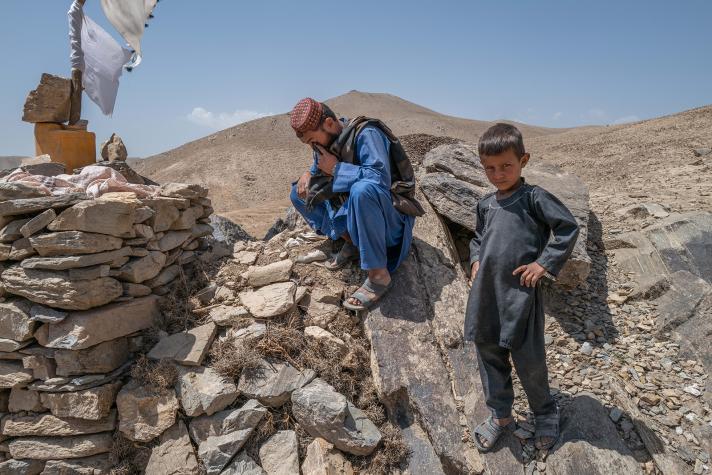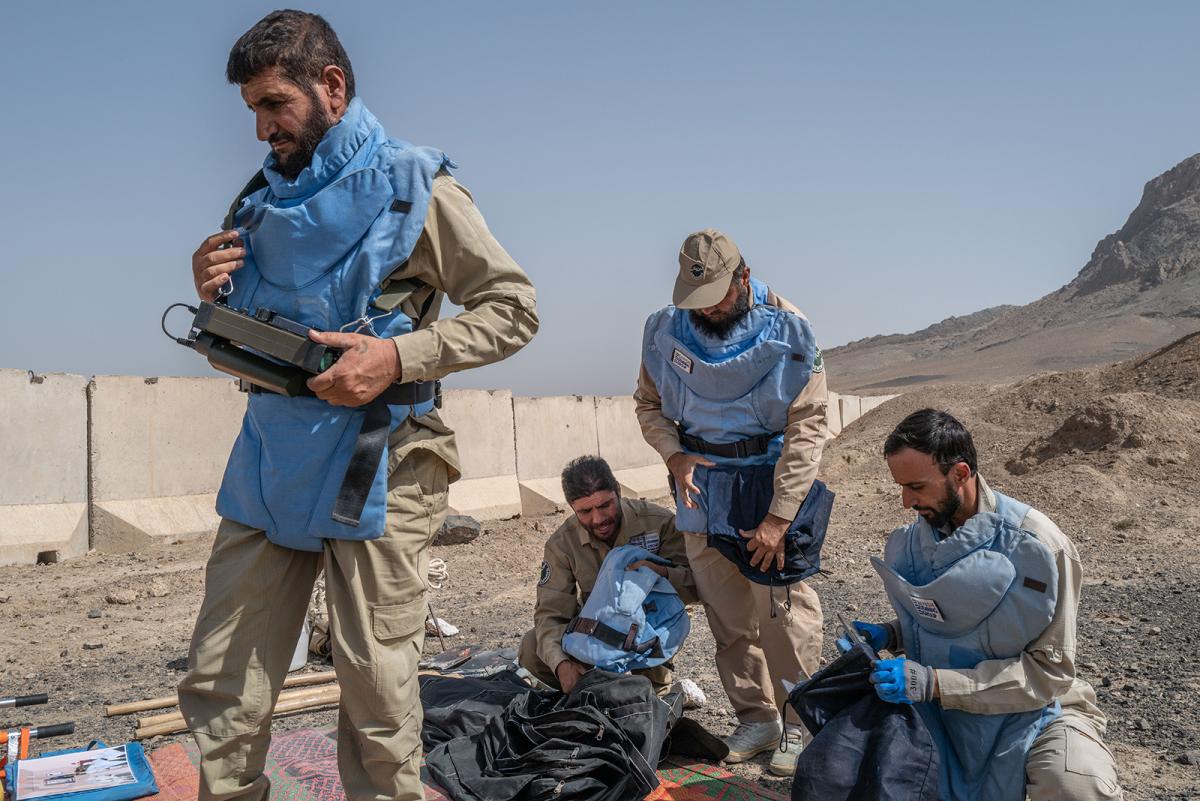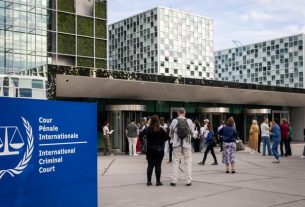The DRC quick response team prepare to conduct clearance of explosive remnants of war in Panjwayi District of Kandahar.
© Kern Hendricks for Danish Refugee Council
In Afghanistan, deadly, rusting legacies of war are embedded in the walls of homes, lodged in roadside ditches, and half-buried in remote hillsides.
These objects are known as explosive remnants of war. They remain in the ground for decades, waiting silently to be discovered by a curious child, a metal scrap collector desperate for spare cash, or stepped on by an unsuspecting farmer or animal herder.
EU humanitarian funding supports mine action in Afghanistan. We help NGOs like the Danish Refugee Council (DRC) to clear land, run risk-education classes, and assist victims of explosive remnants of war.
On a quiet, warm July morning, 8-year-old Wali was returning home from a morning spent tending to his family’s sheep.
Along with his 2 elder brothers and 2 of their cousins, the boys had spent the early hours of the morning working in the red and yellow hills near their home in Badom Khel Village, and now they were heading home for some breakfast.
Tramping across the stony hillside, the boys noticed a strange cylindrical metal object half-buried in the ground. They did what most curious kids would do— they picked it up and carried it home with them.
About half an hour later, on the other side of the village, Wali’s father, Umera Khan, was having breakfast when he heard the dull, percussive thud of an explosion in the distance.
As the sound echoed through the hills, he instantly knew that something was wrong—there hadn’t been any fighting in the area since the Taliban took power nearly a year ago.
Khan called his sister, who was back at Badom Khel Village, close to where the boys had been working. The voice on the other end of the line was distraught.
“I could hardly understand her; all I could hear was crying and yelling,” Khan said a few weeks later, sitting in the shade of a small canvas tent on the edge of the village. He couldn’t calm her down, but Khan eventually deciphered what his sister was trying to say.
Khan’s sister told him that the boys had returned from their morning work and gone into one of the family’s tents. A few minutes later, there was an explosion.
Khan later discovered what the boys had unearthed from the hillside—a soviet-era artillery shell. When they brought it home and started to tinker with it, the shell exploded. All 5 boys were dead. The oldest, Ruzi Khan, was 19. Wali, the youngest, was only 8.
Remnants of war are still everywhere

© Kern Hendricks for Danish Refugee Council
More than a year after the Taliban’s takeover of Afghanistan, and despite a period of relative calm after 4 decades of war, tragedies like the one in Badom Khel Village are still shockingly commonplace.
Explosive remnants of war are everywhere. Some are decades old. Others are recent, a reminder of the fighting between the Taliban and former Afghan government forces just 18 months ago.
While large-scale conflict has largely abated and security has markedly improved, making Afghanistan safe from explosive remnants of war is still monumental.
Education, technical support, and international funding are all needed to fully address the dangers posed to Afghan civilians. If this crisis is not addressed, families like Khan’s will continue to pay the price of life-changing injuries and lost loved ones.
The human cost of explosive remnants of war contamination in Afghanistan is immense. A 2021 report published by the Mine Action Program of Afghanistan estimated that 127 people are killed every month in these accidents across the country.
Due to decades of constant conflict, Afghanistan remains one of the most highly contaminated countries by explosive remnants of war.
Clearing and destroying these devices is a very slow process. In 2021, demining organisations were able to clear just 66 km2 of land out of roughly 1500 km2 of surveyed land with confirmed contamination, and new areas of contamination continue to be discovered.
Afghanistan’s economic collapse considerable affected these clearance efforts across the country. Sanctions and a shortage of international funding have gutted Afghan national demining organisations, which now operate at a significantly reduced capacity.
EU humanitarian support to mine action

EU-funded community risk education class in Paghman Province
© Kern Hendricks for Danish Refugee Council
By supporting actions to clear land, EU humanitarian aid is also helping communities in their socio-economic development. EU-funded projects also enable community-level risk-education classes and financial support for victims.
Yet, even as organisations like the Danish Refugee Council increase the scope and scale of their demining operations, lives continue to be lost with shocking regularity.
On 30 July, just a few weeks after Wali and his 2 brothers and 2 cousins were killed, 5 more boys lost their lives in a nearby village when they discovered and accidentally detonated a mortar buried in the ground.
Several weeks after the accident in Badom Khel village, 8-year-old Wali’s father, Umera Khan, returned to the site of the accident. There are no tents there now, but the small crater from the blast is still visible.
Khan used stones to construct a small memorial for the 5 boys, and a white flag now flutters quietly in the breeze above the site. Amongst the stones are a scattering of items: a hat, a torn shirt, a small shoe with dark red stains.

Umera Khan used stones to construct a memorial to the 5 boys killed at the site of the accident.
© Kern Hendricks for Danish Refugee Council
“I wish I could have done something more to prevent this,” he says, turning the shoe over slowly in his hand.
“I told them many times to be careful around these dangerous objects, but they’re just kids and they don’t always listen. My father lost his leg and his arm to a landmine during the Russian occupation. Now my sons have been taken in the same way—30 years and nothing has changed.”
Story and photos by the Danish Refugee Council.
Publication date: 15/11/2022



